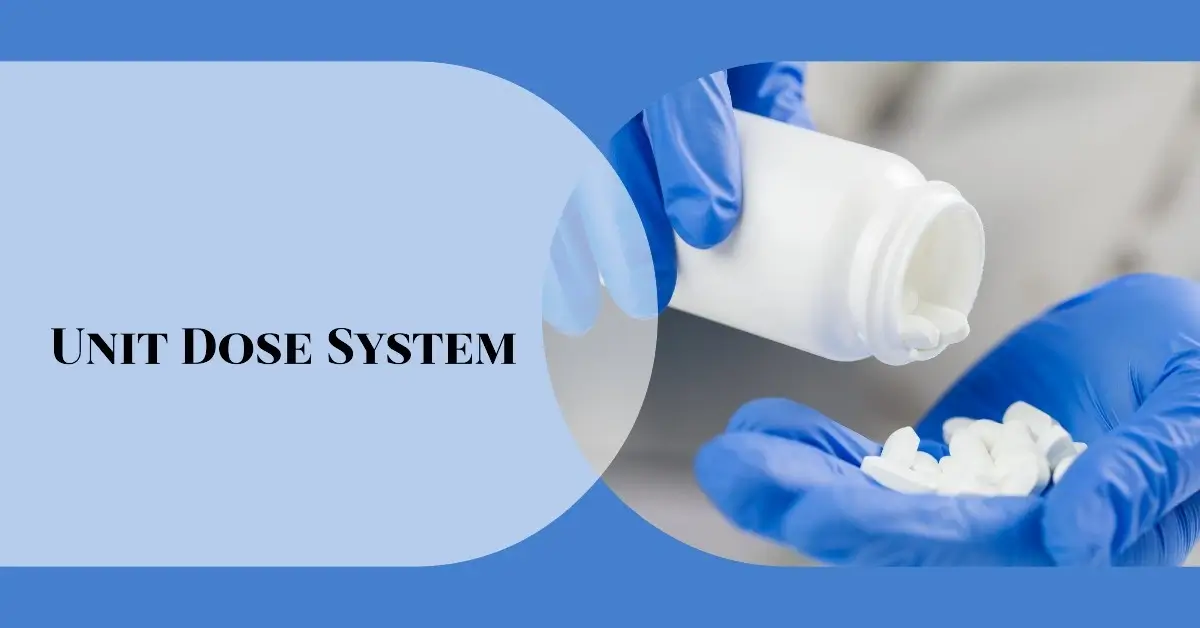Unit dose medications are like the individual servings of drugs or supplies you might find in a small package or container. They’re made to provide the right amount for one regular dose or use. This isn’t a new idea – think of disposable syringes with a single dose of medicine or those little capsules and tablets wrapped in foil or plastic that you can easily find.
In hospitals, it’s the pharmacist’s job to handle unit dose medications, but it’s a team effort. Nurses, administrators, and doctors all need to work together for this system to run smoothly. The hospital pharmacist teaches the other staff members about how this system works.
Table of Contents
Types of Unit Dose Systems
Either of the following two types of unit dose dispensing systems exist in hospitals:
- 1) Centralized Unit Dose Dispensing (CUDD): In this system, the in-patient drugs are dispensed in unit doses; the drugs are stored in the main pharmacy, and dispensed when the dose is to be given to the patient. Drugs are transferred from the pharmacy to the indoor patient by medication cards and dumbwaiters. A suction tube system (called a pneumatic tube) is used to send a copy of the physician’s original medication order to the pharmacy for direct interpretation and filling.
- 2) Decentralized Unit Dose Dispensing (DUDD) or Satellite Pharmacy Services: Satellite pharmacies (or small pharmacies) should be located on each floor of the hospital. The main pharmacy procures, stores, manufactures, packages, and supplies the drugs to the satellite pharmacies on receiving the medication order. This system can be used for a hospital with separate building.
The procedure followed in a decentralized unit dose system is as follows:
- The patient is admitted to the hospital and is entered into this system. Diagnosis, allergies, and other data are recorded on the patient profile card.
- A copy of the medication order is sent to the hospital pharmacist.
- The pharmacist enters the medication order on the patient profile card.
- The pharmacist checks the medication order for allergies, drug -interaction, and rationale of therapy.
- The pharmacist schedules the dosage by consulting the nursing station.
- Medication cost is filled for particular scheduled delivery after inspection.
- The nursing staff administers the medication to the patient and makes entries on their medication record.
- The medication card is returned to the pharmacy and re-checked.
Advantages of Unit Dose System
Unit dose dispensing system has the following advantages:
- Patients receive a letter service and are charged for doses administered to them.
- Nurses get more time for patient care as all medication doses are prepared in the pharmacy.
- Pharmacists check the original copy of the physician‟s order, thus the medication errors are minimized.
- Paperwork is reduced at the nursing unit and the pharmacy.
- Better financial control can be provided.Less pilferage occurs.
- The loss of partially used medications is prevented.
- Storage facilities at the nursing station are not required.
- Communication of medication orders and delivery system are improved.
- The hospital pharmacist gets better provisions to control the entire operation throughout the hospital from the time the physicians write the medication order till the time the patients receive the unit dose.
Disadvantages of Unit Dose System
Unit dose dispensing system has the following disadvantages:
- Increased Cost: A unit dose system requires additional equipment and more expensive medications. Unit-dose medications are more costly than the same medications available in bulk packaging.
- Time-consuming: A pharmacist takes more time to handle each dose individually than to send the bulk drug to award. Also, checking and transcribing orders, and identifying drug interactions and contraindications are time-taking processes.
- Increased Staffing: The unit dose system is time-consuming and labor-intensive, thus more pharmacy personnel are required.
- Frequent Ordering: In the ward issue system, orders are frequently placed.
Related Articles

I am pursuing MBA in pharmaceutical management from NIPER Hyderabad with a strong academic record and proven success in national-level pharmacy entrance exams. I secured AIR 61 in NIPER 2024 (MS/M.Pharm) and AIR 27 in NIPER MBA, along with AIR 147 in GPAT 2024 and AIR 907 in GPAT 2023. I also achieved AIR 6 in AIIMS CRE-2025 for Drug Store Keeper and was selected as a Pharmacist (AIR 61) for ESIC. Additionally, I was the Runner-Up in Round 2 of the EY Case Study Competition.
At PharmacyFreak.com, I aim to guide future pharmacists through expert content, exam strategies, and insightful resources based on real experience and academic excellence.
Mail- harsh@pharmacyfreak.com
